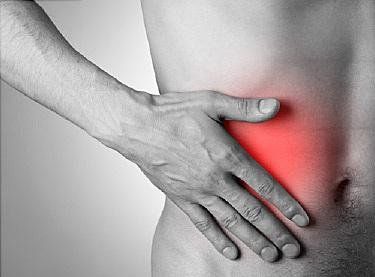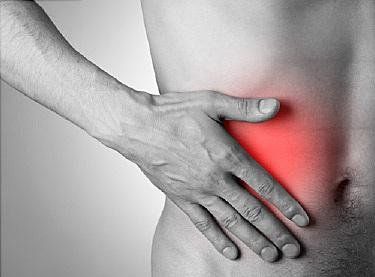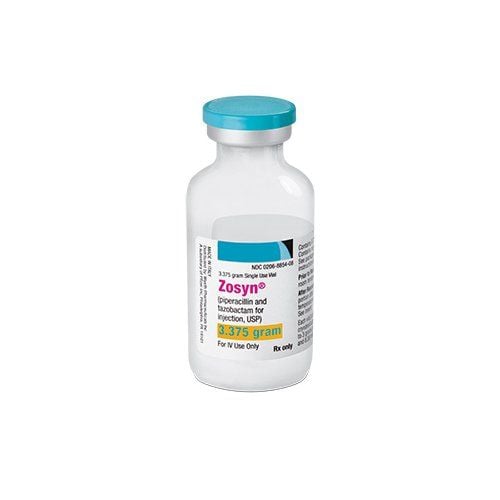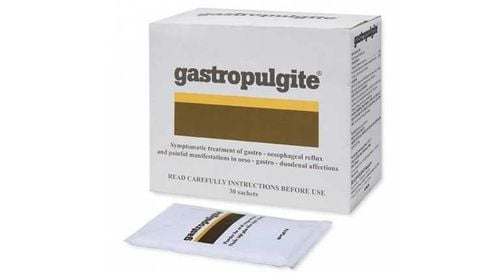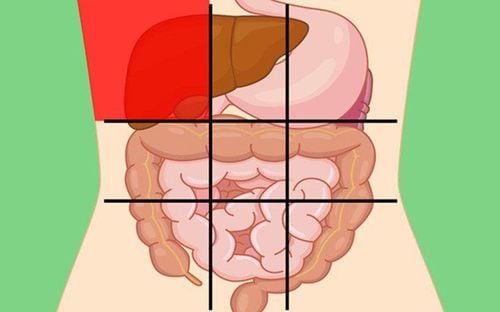This is an automatically translated article.
Article written by Doctor Ngo Viet Thang - Gastroenterologist, Department of General Surgery, Vinmec Ha Long International General Hospital.
Acute appendicitis is a fairly common surgical emergency. If not diagnosed and treated promptly, the disease can lead to life-threatening complications of peritonitis.
1. What is acute appendicitis?
The appendix is a small, pouch-shaped, narrow and several centimeters long segment of intestine attached to the cecum. The appendix is located in the lower right abdomen - the junction between the small intestine and the large intestine. The function of the appendix in the body is currently unknown.
Acute appendicitis is an acute inflammation of the appendix. Obstruction in the lumen of the appendix (fecal calculi, enlarged submucosal lymphatic cysts, foreign body, tumor of the appendix or cecum) may be the cause of inflammation. The bacteria multiply rapidly due to the blockage causing the appendix to become inflamed, swollen and pus. If not treated promptly, the appendix can rupture, causing pus to spread into the abdomen, causing life-threatening peritonitis. In other cases, appendicitis can be confined by surrounding organs and form abscesses.
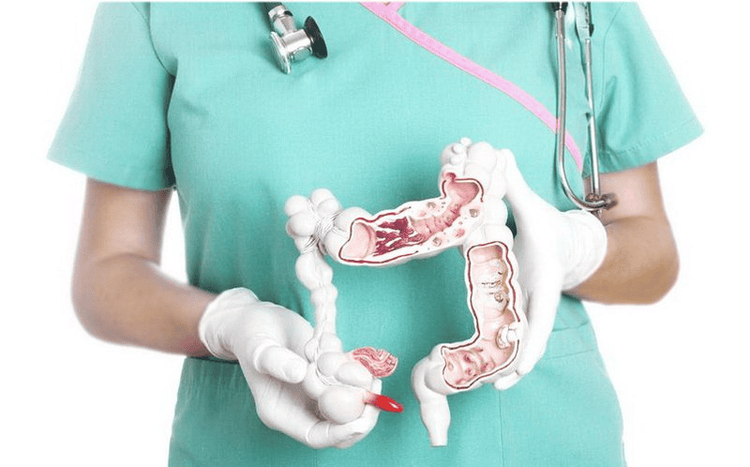
Viêm ruột thừa cấp nếu không được chẩn đoán và điều trị kịp thời có thể dẫn đến nhiều biến chứng
2. Diagnostic methods for acute appendicitis
2.1 Clinical examination 70% of patients with acute appendicitis have typical clinical symptoms. Therefore, the diagnosis of the disease based on the characteristic symptoms is one of the first applied methods. The warning signs of acute appendicitis are:
Abdominal pain around the umbilicus or epigastrium in the early stages of the disease. Later, the patient had pain in the right iliac fossa. Pain increases and persists for several hours, worsening when turning, breathing heavily, coughing, sneezing, walking, or being touched. Constipation, sometimes diarrhea. Heart beats fast. High fever with chills may be associated with complicated appendicitis. Abdominal distention (late stage). Loss of appetite, dirty tongue, bad breath. Painful or painful urination.

Khám lâm sàng vùng bụng để chẩn đoán viêm ruột thừa cấp
During the physical examination, the doctor may gently press on the painful area. If it is appendicitis, the pain will be worse when the doctor removes the hand (a sign of inflammation in the adjacent peritoneum). The doctor may see a patient's abdominal stiffness and a tendency to contract the abdominal muscles in response to pressure on the inflamed abdomen. In addition, the doctor may examine the patient's rectum as needed. Women of reproductive age may be indicated for pelvic examination to rule out gynecological causes of pain.
2.2 Do some tests Blood tests: allow your doctor to check your white blood cell count and CRP for signs of infection in your body. Urinalysis to rule out a urinary tract infection or kidney stones as the cause of the pain. Test to rule out ectopic pregnancy as the cause of symptoms similar to acute appendicitis. 2.3 Imaging methods For cases of atypical acute appendicitis, imaging plays a very important role. A recent study showed that: based on clinical alone, the misdiagnosis rate of acute appendicitis can be up to 30%. However, when combined with ultrasonography to diagnose acute appendicitis, the misdiagnosis rate drops to 14%, and if computed tomography is used, the error rate drops to 7%.
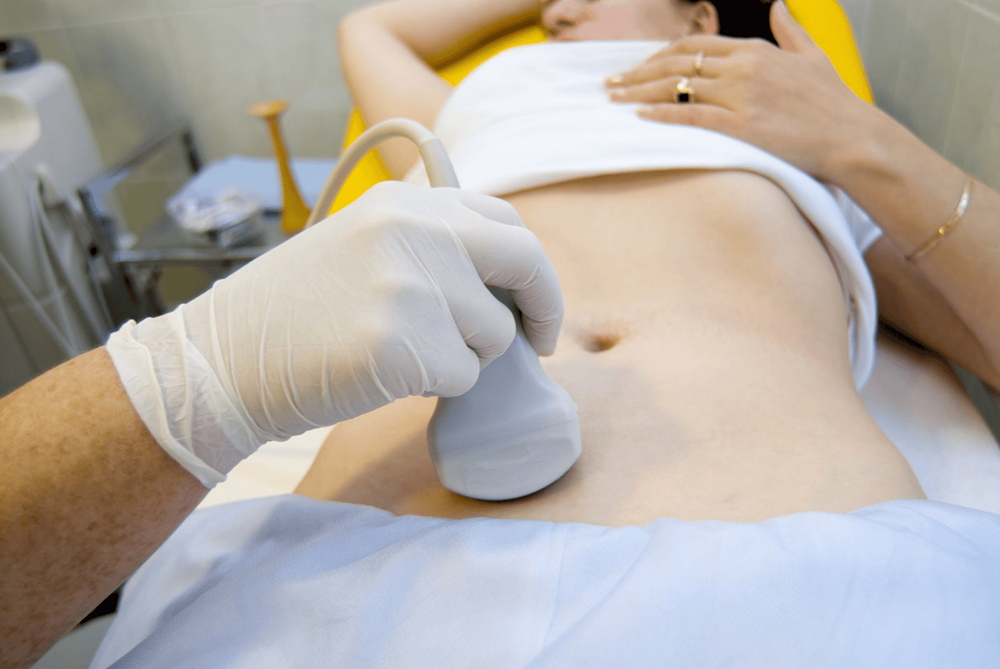
Siêu âm chẩn đoán viêm ruột thừa
The commonly used imaging methods are:
Ultrasound: the doctor uses a high-frequency transducer, gradually and gently presses the transducer over the painful sensitive area, suspected of having acute appendicitis. to investigate and evaluate the swelling of the inflamed appendix. This method is valuable because of its high sensitivity and specificity, it can detect appendicitis with a rate of up to 98% and is also valuable in diagnosing diseases causing pain in the right iliac fossa, typically appendicitis. department and urology. However, ultrasound diagnosis of acute appendicitis can also be difficult if the patient is obese, the abdomen is distended, the bladder is overdistended, the patient is more than 6 months pregnant, the abdominal wall is reactive, or the appendix is located. abnormal. Abdominal X-ray: may show appendicitis fecal stones. However, this method has low reliability because there are many diseases that also produce images such as acute appendicitis. Often used to distinguish from other diseases. Barium enema with enema: Normally, the appendix may fill with barite during enema. If the appendix becomes inflamed or blocked, the barite will not pass through and that is the sign to diagnose acute appendicitis. In addition, this method can also help in differential diagnosis with some diseases that can be mistaken for acute appendicitis such as colon cancer, spastic colitis, ileocecal inflammation,... Microscopic tomography Abdominal features: has high sensitivity and specificity in the diagnosis of acute appendicitis. Computed tomography (CT) helps to confirm the diagnosis in difficult, atypical cases. It is also useful in the differential diagnosis in unclear cases.
3. Treatment method for acute appendicitis
Does acute appendicitis require surgery? The gold standard treatment for appendicitis is surgical removal of the inflamed appendix. Before surgery, patients may be treated with antibiotics to prevent infection.
3.1 Appendectomy Surgery An appendectomy can be an open surgery performed by making a 5 - 10 centimeter incision in the skin of the abdomen (open surgery) or surgery through a few small openings in the abdomen (surgery). endoscopy). During laparoscopic surgery, the doctor will insert into the patient's abdomen a video camera and specialized equipment for appendectomy.
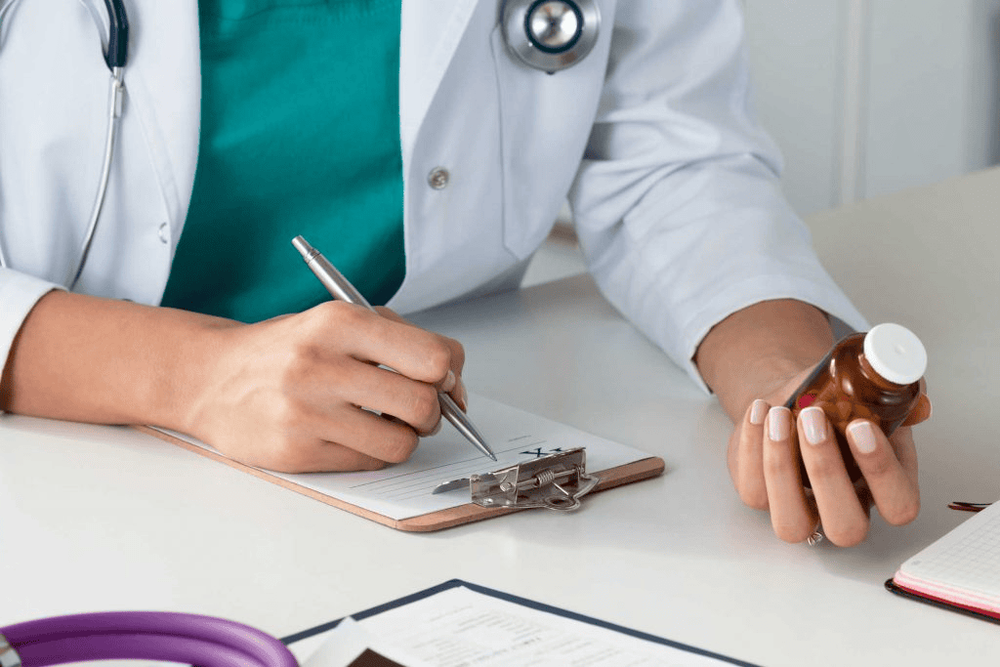
Bệnh nhân có thể sử dụng thuốc kháng sinh điều trị viêm ruột thừa nếu triệu chứng nhẹ
Usually, laparoscopic surgery helps patients recover faster, with less pain and less scarring. This method is a good choice for most patients if there are no contraindications to laparoscopic surgery such as: cardiovascular disease and severe respiratory disease, previous abdominal surgery (relative contraindications). ...In cases where the appendix is located in an abnormal position, or where appendicitis has complications where continued laparoscopic surgery is not feasible or unsafe, or in cases of intestinal peritonitis. If the bowel is too distended, the intestines are too distended, or the abdominal cavity is too dirty to be cleared by laparoscopic surgery, the better option is to switch to open surgery. The transition from laparoscopic to open surgery is not a failure of laparoscopic surgery, but rather a judgment based on patient safety and efficacy. Usually with cases of uncomplicated appendicitis undergoing laparoscopic appendectomy, the patient usually stays in the hospital for 1-2 days, depending on the patient's recovery. In cases of appendicitis with complications of rupture causing peritonitis, patients usually stay in the hospital for longer than about 5 days.
3.2 Non-surgical treatment According to some studies, cases of uncomplicated acute appendicitis can be treated with antibiotics with a success rate of more than 90%. However, the recurrence rate after conservative treatment without surgery after 1 year is quite higher than 30%. Therefore, up to now, laparoscopic appendectomy is still the gold standard for the treatment of acute appendicitis.
With cases of appendicitis with rupture complications causing appendiceal abscess. The patient will be treated with drainage of the abscess under ultrasound and in combination with antibiotic therapy. After that, appendectomy will be considered after 6 months when the patient is stable.
For cases of appendicitis without complications in cases where the patient's condition is not warranted for surgery such as: patients with severe coagulopathy, patients with very serious medical conditions that cannot be tolerated. Surgery may consider conservative treatment with antibiotics.
3.3 Complications after appendectomy The complication rate of magnetic bowel resection is generally between 4-15%. Complications that may be encountered are: incisional or abdominal bleeding, wound or abdominal infection, residual abscess fluid, hollow organ damage, postoperative intestinal adhesions, complications related to anaesthesia such as embolism, pulmonary embolism, ... The rate of complications depends on whether appendicitis has complications or not, surgical methods, and the patient's comorbidities. For example: laparoscopic surgery has a lower rate of wound infection than open surgery, and the rate of residual abscess and intestinal adhesions after surgery in patients with complicated appendicitis will be higher than with early uncomplicated appendicitis.
2 - 4% of appendectomy cases have an infection: either an infection of the incision or the formation of an intra-abdominal abscess (with pus accumulating in the appendix). Venous embolism, pulmonary embolism, cardiovascular problems, shortness of breath, poor wound healing, ... common in smokers, obesity, diabetes, heart failure, kidney failure, lung disease, ...
4. Caring for patients with acute appendicitis
4.1 Attention in daily life and drug use Can use antibiotics and pain relievers as prescribed by the doctor. Patients can use heating pads or ice packs over the incision to relieve pain. During the first week after surgery, the patient should exercise gently, do not lift heavy objects or participate in strenuous activities. In case the appendix has not ruptured, the child can return to school 2-3 days after surgery. If the appendix has ruptured, the child can return to school 2 weeks after surgery. Most children can resume sports activities 1 week after surgery. Wash the incision at home gently, the incision can be exposed to air to speed up the surface, avoid using powder or cream applied to the incision. Do not take a bath, do not participate in water activities for 1 month until the incision is completely healed. Wear comfortable clothing and avoid tight clothing that can irritate the skin around the incision site. Protect your stomach when coughing by placing a pillow in front of your stomach, pressing it when coughing, laughing, or turning to relieve pain. Do not drive until your first post-operative visit. Can climb stairs, walk, ... to exercise after surgery for acute appendicitis. Talk to your doctor about when to have sex after surgery. The scar heals after 4-6 weeks and will soften and fade over time.

Có thể đi bộ tập luyện sau phẫu thuật viêm ruột thừa
4.2 Attention in diet After surgery, it is necessary to divide meals into many small portions during the day: 6-8 meals/day. Return to the old diet according to the doctor's advice at an appropriate time. Drink plenty of water and non-caffeinated drinks, avoid fatty and greasy foods, etc. to avoid constipation after surgery. 4.3 When should a doctor be contacted? Patients should consult a doctor when they have the following postoperative symptoms:
High fever over 38 degrees Celsius, with or without cough. This is a warning sign of a lung infection or an infection in the abdomen. Heart rate rises above 100 beats/min. Chest pain, sudden shortness of breath. More stomach pain or discomfort. The incision is excessively red or swollen. The incision is open. Leg swelling and calf pain due to blood clots forming in the legs. Nausea, vomiting, chills, profuse sweating. Continuous diarrhea with fever (sign of intestinal infection). Constipation. Inability to go to the bathroom or an empty bladder. After surgery for acute appendicitis, patients need to be re-examined about 2 weeks after discharge. Patients should arrange a follow-up visit at the right time for the best examination and support.
If you have a need for consultation and examination at Vinmec Hospitals under the national health system, please book an appointment on the website (vinmec.com) for service.
Please dial HOTLINE for more information or register for an appointment HERE. Download MyVinmec app to make appointments faster and to manage your bookings easily.




